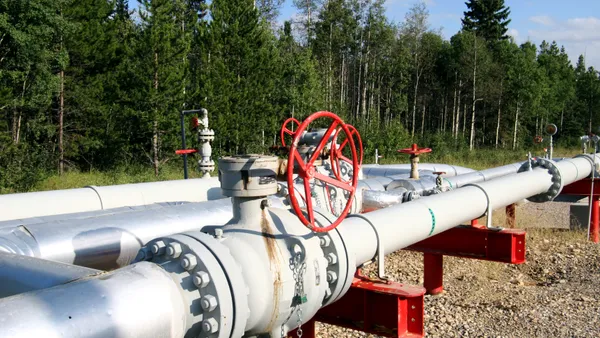Quick Facts
SDG&E's Escondido energy storage project
-
Location:
Escondido, California
-
Stakeholders:
San Diego Gas & Electric and AES Energy Storage
-
Battery capabilities:
30 MW, 120 MWh
Project details:
World's largest lithium-ion battery storage system.
Timeline:
Project deployed in about six months.
Impact on the market:
Proving the capabilities of long-duration storage.
Since its inception, power generation has been notoriously difficult to build. Even once developers sort through regulatory preferences and siting difficulties, they still must construct huge slabs of modern industry on time and on budget — a feat that’s tripped up more than one utility in 2017.
Whether in a regulated or restructured state, building even relatively simple natural gas plants or grid upgrades can take years, and the process for more complex nuclear generators or transmission lines often stretches decades. The long lead times mean utilities must plan for new infrastructure many years in advance and make it difficult to respond to short-term changes on the grid.
But recent developments in California could prove to be a turning point. After the worst methane leak in United States history took the Aliso Canyon gas storage facility offline, California regulators early last year issued a series of mitigation measures, including energy efficiency programs and an expedited approval process for energy storage projects.
It was the opening the energy storage industry was waiting for. A year and a half from the decision, California utilities have deployed multiple long-duration storage applications, including installations from Tesla, AES and Greensmith/AltaGas.
The largest of these facilities is the 30 MW, 120 MWh Escondido energy storage project built by AES, and is one of the biggest lithium ion battery installations in the world. Built in about six months, it and a smaller, 7 MW battery provide daily ramping and peak shaving services for San Diego Gas & Electric — services typically delivered by gas generators.
The Aliso Canyon gas crisis initiated a number of innovative projects — including the first hybrid gas generator paired with a battery — but the SDG&E deployment stands out for its scale, speed and its ripple effect in the industry.
“With [utility] leaders moving in and saying we're willing to sign up for 37 MW and we need it in four or five months, it’s already gotten notice with people from South America,” Brian Perusse, vice president for international market development at AES, told Utility Dive during visit to the facility late last year. “People from Brazil, Mexico and Colombia are saying ‘can you tell us a little bit more about that? Can you send us a white paper?’"
Already, the success of the Escondido batteries and installations like them appear to be influencing California utility regulation. In October, regulators turned back proposals to upgrade the Ellwood and Puente gas plants, in part because they said renewables and storage resources could provide cost-effective alternatives.
Looking Forward
Developments like those could prove crucial as California pushes to integrate 50% renewables and cut carbon emissions 40% by 2030. Even as it was being built, the ease in siting the battery — deployed on a lot adjacent to a substation owned by SDG&E — had the utility thinking about how storage can provide grid flexibility services usually reserved for gas plants.
“It’s a little too early to tell if storage is going to replace all peakers going forward,” said Randy Nicholson, SDG&E’s policy manager for advanced technology. “This project in particular is going to help us answer that question, to determine whether going forward if you want to start moving the mix in another direction."













